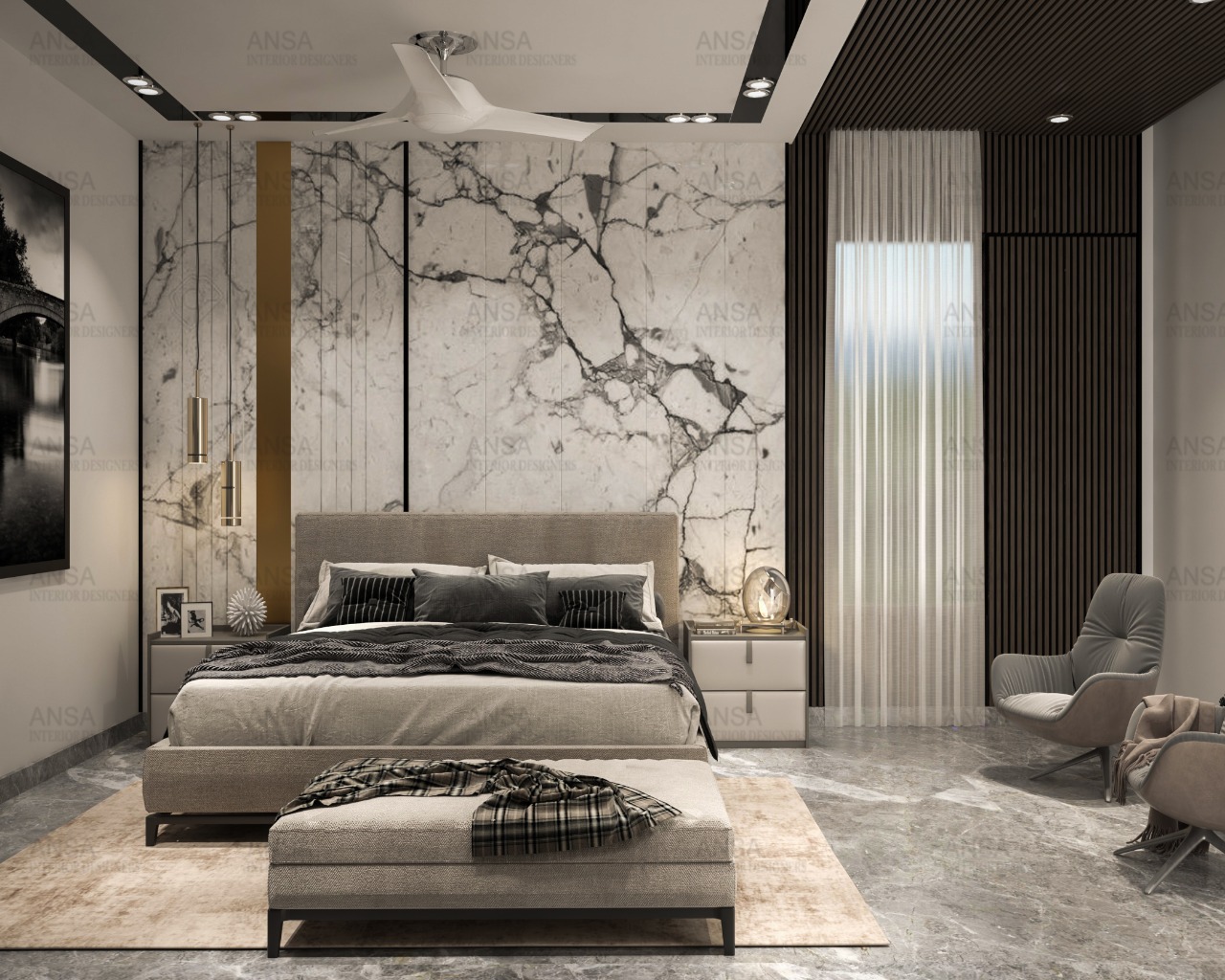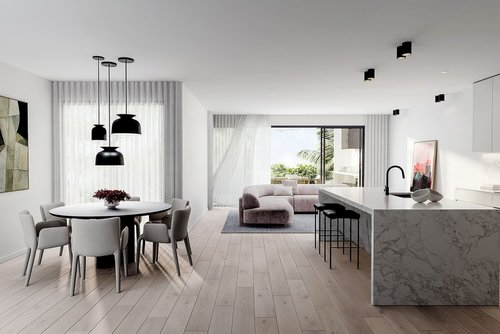Experience Sophistication with a Leading High-end Interior Designer Miami
Experience Sophistication with a Leading High-end Interior Designer Miami
Blog Article
Why Understanding the Concepts of Interior Decoration Is Important for Effective Space Preparation
Comprehending the concepts of interior layout is fundamental to efficient space preparation, as it lays the groundwork for producing environments that balance capability with aesthetic appeal. Crucial elements such as balance, circulation, and proportion are not just attractive factors to consider; they are essential in optimizing how a space is utilized.
Significance of Space Planning
Space preparation is a basic facet of interior decoration that dramatically affects the performance and aesthetics of a space. It entails the critical setup of furniture, fixtures, and architectural components to maximize the usage of offered area while enhancing the overall user experience. Reliable area planning addresses various factors, consisting of circulation, availability, and the particular needs of the occupants.
Among the main benefits of space preparation is its capability to improve spatial effectiveness. Interior design Miami. By attentively organizing a layout, developers can guarantee that every area offers a function, lowering mess and promoting a feeling of order. In addition, appropriate room preparation fosters an unified atmosphere, enabling seamless movement and communication within a space
In addition, successful space planning thinks about all-natural light, sightlines, and the relationship in between various areas. This all natural technique not only raises the visual appeal yet also adds to the well-being and performance of the residents. Inevitably, a well-executed space strategy is important in developing a balanced and welcoming atmosphere, making it crucial for any type of interior layout job.
Trick Principles of Inside Style

One essential concept is balance, which can be balanced, asymmetrical, or radial. In proportion balance produces a sense of order, while unbalanced equilibrium provides an extra dynamic aesthetic allure. One more crucial concept is proportion and scale, ensuring that the dimension of furniture and decoration elements associate sympathetically to every various other and the total area.
Shade theory additionally plays a substantial role, impacting state of mind and perception. Developers utilize color combinations to stimulate particular sensations and enhance the spatial experience. In addition, the principle of rhythm includes developing a feeling of movement with rep of shapes, colors, or patterns, guiding the eye throughout the space.
Finally, the principle of emphasis guides interest to focal points, enabling for a clear story within the style. Interior design studio Miami. By adhering to these key principles, interior developers can develop settings that not just satisfy practical demands but likewise reverberate with the residents on an emotional degree
Influence On Capability and Circulation

The plan of furniture, the choice of materials, and the assimilation of modern technology all play critical roles in attaining optimum capability. For circumstances, putting seating areas in proximity to workspaces can promote interaction and partnership, thus enhancing performance. Furthermore, guaranteeing that pathways are clear and unhampered permits for reliable motion, minimizing congestion and advertising an all-natural flow throughout the room.
Furthermore, incorporating components such as lighting and color can additionally help in marking locations, making it simpler for individuals to navigate their environment. Thoughtful room planning considers not just the physical aspects of layout however also exactly how users connect with their surroundings. Inevitably, a focus on capability and circulation not only enhances the user experience however also boosts the general performance of the area, creating an atmosphere that meets the requirements of its occupants while promoting a sense of consistency and equilibrium.
Enhancing Aesthetics and Mood
3 essential components-- color, illumination, and appearance-- play pivotal functions in boosting the aesthetic appeals and state of mind of an interior area. Shade develops the psychological tone; warm colors like oranges and reds evoke energy and heat, while cooler tones such as blues and environment-friendlies promote peace and harmony. Choosing an unified color palette can transform a room, producing link a natural and find here visually attractive setting.
Structure adds depth and passion, adding to the responsive experience within an area. A mix of appearances-- smooth surface areas, deluxe textiles, and all-natural products-- can produce visual intrigue and enhance comfort. For example, pairing a soft velour couch with a streamlined glass coffee table can produce a balanced aesthetic that invites communication.
Lights, typically a neglected element, dramatically effects mood. All-natural light fosters an open, airy ambience, while tactically positioned man-made lighting can develop warmth and emphasize architectural attributes. Dimmer switches make it possible for flexibility, enabling modifications to match different tasks or times of day.
Integrating these 3 components attentively not only boosts the visual charm of a room however additionally cultivates an environment that reverberates with its intended objective, ultimately enhancing the total experience for its occupants.
Practical Applications in Reality
Using interior style concepts in reality needs a thoughtful strategy that integrates color, structure, and lights right into everyday areas. By recognizing how these aspects function with each other, people can create environments that are not only aesthetically enticing but unified and also functional.
For example, in a tiny living location, using a light shade palette can make the space feel larger and a lot more open. Strategic usage of mirrors can boost all-natural light and create an illusion of depth. Incorporating different structures with fabrics, such as pillows and carpets, can include heat and passion without frustrating the detects.
Lights plays an essential function in specifying the environment. Split illumination, containing ambient, task, and accent choices, enables versatility in mood settings. In a home office, as an example, a combination of natural light, desk lights, and attractive components can improve efficiency while preserving an inviting atmosphere.
Furthermore, comprehending spatial connections and furniture arrangement can lead to improved functionality. By sticking to concepts such as equilibrium and percentage, one can ensure that rooms offer their designated function while staying aesthetically pleasing. Overall, useful applications of interior design concepts dramatically improve the livability and appeal of any setting.
Verdict
Finally, recognizing the concepts of indoor style is essential for efficient space preparation, as it promotes a balance between capability and aesthetic appeals. By applying key principles such as proportion, shade theory, and flow, designers can develop atmospheres that enhance both use and visual allure. Eventually, this knowledge adds to the development of areas that not only satisfy practical needs but likewise raise the total environment, resulting in even more efficient and satisfying experiences for customers.
Comprehending the concepts of interior style is basic to effective area preparation, as it lays the foundation for creating atmospheres that integrate functionality with visual allure.Space planning is an essential facet of interior style that dramatically influences the performance and aesthetics of an area. Furthermore, correct room planning fosters a harmonious setting, permitting for smooth movement and interaction within a space.
Furthermore, the concept of rhythm entails developing a feeling of movement through repetition of patterns, forms, or shades, leading the eye throughout the room.
In conclusion, understanding the principles Get More Information of interior style is vital for reliable room preparation, as it cultivates an equilibrium in between performance and aesthetics.
Report this page